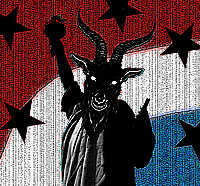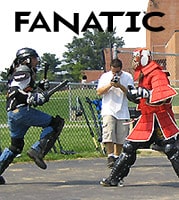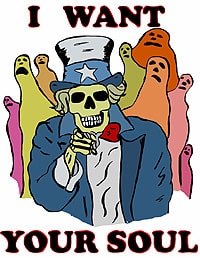A young man at work, who knows as much about MMA as any boy of 1950s America would have known about Major League Baseball serves to keep my apprised of the doings in that sport as I coach people for it to limited degree yet know not what transpires at the top of the game, cut off from the current media stream as I am. Last year Zach informed me that the UFC [alone] has surpassed the NHL in dollars drawn. Yesterday he told me that the UFC alone is the fastest growing sport in the world. He mentioned this on my lunch break as I was reading Gregory Hood’s book on declining America and the fate of Americans of European descent.
As I take up one last time the torch of ancient prize-fighting in a bid to finally finished writing The Broken Dance with the fourth and concluding volume The Boxer Dread, beginning in 323 B.C. and ending in 514 A.D. I have stumbled upon the answer to this question Zach put in my mind.
Obviously, in this society of atomized individuals stripped of their individuality and simultaneously divorced from their cultural and biological roots, the heroization of individual combatants in a chaotic arena where there is an extremely broad spectrum of possible routes to victory and defeat has appeal to a culturally adrift youth or dispossessed adult. MM is expanding at the expense of team contact sports and boxing, an art of a more stable, though no less violent, psychological type.
Below are the ancient trends:
Boxing existed as they premier masculine combat ritual in multiple Indo-European cultures from Persia, to Mesopotamia, to Egypt, Crete and the alter Hellenic world from 2,000 B.C. through 323 B.C. and the death of Alexander. For the final generation of this period pankration [ancient MMA] was overtaking boxing.
For the entire Hellenistic Age, the period of Alexander’s feuding successors, a period of marked religious, cultural, demographic and municipal decline—but also of increasing scientific innovation and military innovation featuring wars fought with mercenary forces, pankration, or all-power-thing, the art of Herakles overshadowed boxing, with the most lauded boxers being those who could win a pankration crown. Through this period boxers and prizefighters were generally looked down upon by philosophers, where they had previously served as behavioral modes for Plato.
During the Republican-Imperial transitional period of Roman history, when Rome acquired Greek culture through slavery and imitation, during which Virgil penned his Aenid, Jesus had his ministry and Paul conducted his mission, and Jerusalem fell to the sons of Vespasian, boxing was regarded as the ultimate masculine art, with Paul’s contemporary, a Corinthian named Melankomas, being regarded as a model man by philosophers.
With the death of Marcus Aurelius, regarded as the last of the Five Good Emperors of the Roman Peace, in the late 100s, pankration again came to the fore, with the only noted boxers being accomplished pankratists or outright knuckleheads managed by the wrestlers who ran the athletic guilds. This was a period of cultural, religious, demographic and municipal decline.
In the ate Roman empire, as terminal decline set in at least two Roman emperors put forth boxing as a behavioral model, being the most stoic of combat sports. Backward-looking epic poets all featured boxers as heroes in their epics. Finally, as Christian assassins hunted the last athletes of the ancient world as they fought in secret according to the old pagan rites, and the atomized remnants of Roman society were fought over by overwhelmingly mercenary armies, according to revolutionary methods [the stirrup utilized for shock cavalry tactics and Asiatic horse archery employed o further marginalize the military effectiveness of the tribal foot soldier] and darkness fell over Europe, all combat rites were extinguished on the social stage, ritual combat no longer having a role in a pure slave society of men on foot as the right to their labor was contested by men owning the new method of war, from horseback.
The reader might look to modern parallels to the fall of Hellenic and Roman culture as expressed in those ancient Arуan society’s combat sports.
Taboo You: Deluxe Man Cave Edition











>as Christian assassins hunted the last athletes of the ancient world as they fought in secret according to the old pagan rites
What's this?
Just after 500 A.D. a small group of athletes got together at Olympia and competed in secret and signed a plaque. Observing pagan athletic rites was heretical and these contests were no longer sanctioned by the state as Christian agents pressured the athletes. I have no explicit evidence that these athletes were hunted, so it will get a footnote in the book, but count the secrecy with which they conducted themselves in much reduced numbers as an implication of persecution. Since, bakers caught overcharging for their bread in Constantinople were thrown into their own ovens, and heretics were routinely killed, I see this as a safe bet. Of course they would not be latter day "hashishans" but some sort of goon squad or fanatic mob such as Saul incited against first generation Christians before his vision on the Road to Damascus.
“Too many amateur instructors have forgotten entirely that the purpose of boxing lessons is to teach a fellow to defend himself with his fists; not to point him toward amateur or professional competition with boxing gloves.” -Jack Dempsey, “Championship Fighting “, 1950.
Interesting historical perspective James. However I think there are other reasons as well, reasons less esoteric and less bound to historical trends, that MMA has captured the public imagination in the 21st century. Clearly the fascination with MMA has also inspired renewed interest in other combat sports. The Rio Olympic Games, for example, featured both male and female boxing and wrestling, plus there is increased interest in professional boxing.
1. The UFC settled the perennial dispute over who could beat who, which fighting art is superior. Now we all understand that hand to hand combat is an “interdisciplinary” subject. One must be proficient in striking AND grappling to be competitive. MMA fighters must master techniques from many different martial arts. The art or technique itself matters less than the ability of the fighter to execute it effectively. Nobody today imagines that a certain MMA fighter is going to win the match just because he has a “black belt” in a certain style of fighting or because he has mastered control of “chi”. The oriental arts have been forced to be more practical and less mysterious.
2. MMA fights are seldom dull and indecisive. During the 1980’s and 1990’s boxing seemed plagued with dull and indecisive fights and followed by incompressible decisions by the judges. It often seemed like the judges “must have been watching a different match”. The public lost interest and the networks quit televising boxing. By contrast, of the four UFC matches featured on FOX free TV Sat 27 Aug, 2016, only one ended in a split decision. Of the others, one ended in a spectacular KO from a high kick to the head and the other two by submission from choke holds. Even someone unfamiliar with the sport could follow what was happening in those fights.
3. Fewer men were familiar with the sport of boxing following the abolition of scholastic boxing in America in the 1960’s. Up until then every high school and college sports program had a boxing team. The NCAA banned boxing as an intercollegiate sport after U of Wisconsin boxing team member Charlie Mohr died on April 17, 1960, eight days after taking a punch that detached a blood vessel in his brain during the NCAA championships. High schools soon followed suit. If a person plays at a sport himself then he will always enjoy seeing the sport played well, but boxing soon became something strange and unfamiliar to the majority of American men. Many would never see a live match. Thus they couldn’t understand the subtlety of the sweet science, would develop all sorts of misconceptions about boxing and generally lose interest in it. MMA has renewed the interest in boxing as well as other martial arts.
4. Cable, satellite and pay per view TV made more niche programing possible. Suddenly it was possible to watch sports events that the major broadcast networks chose not to feature. Like UFC “cage fights”.
5. Digital video recorders (DVR) changed people’s TV viewing habits. Now they record their favorite programs for later viewing and fast forward through the commercials. HOWEVER, people will watch sports events live, meaning that they will see all the commercials. This makes ALL sports events a desirable venue for advertisers. Both MMA and boxing benefit from the new technology.